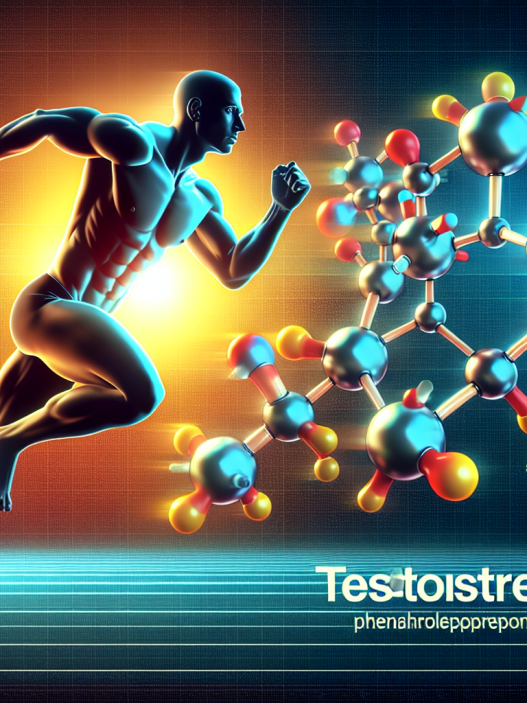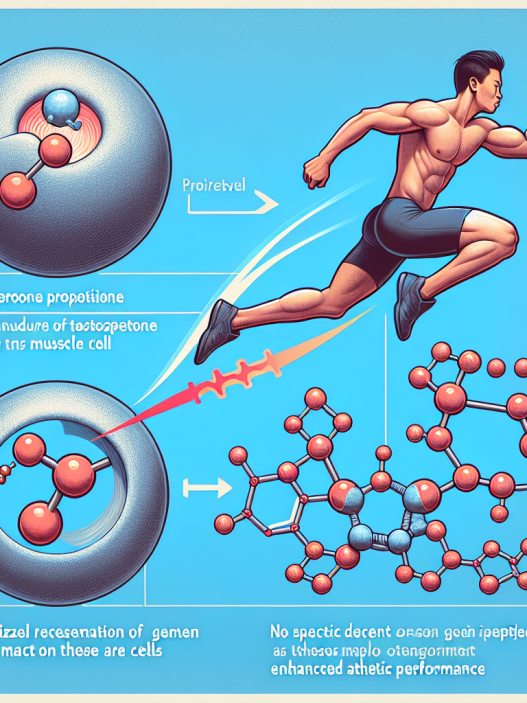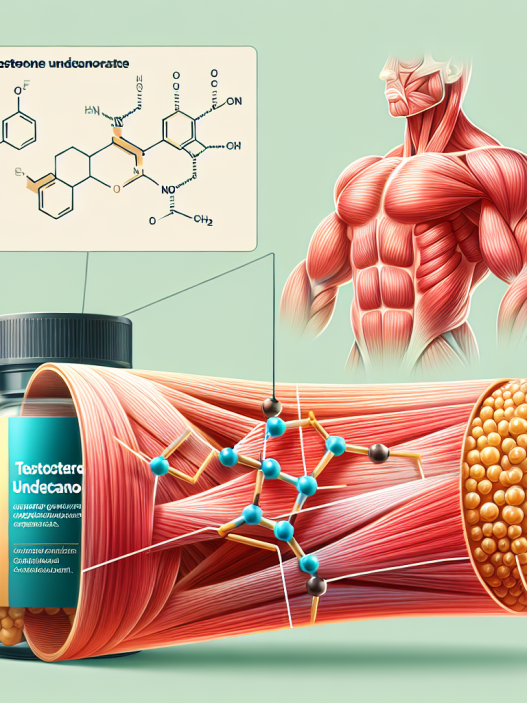-
Table of Contents
- Testosterone Enanthate: Secret Weapon of Professional Athletes?
- The Science Behind Testosterone Enanthate
- Pharmacodynamics of Testosterone Enanthate
- Pharmacokinetics of Testosterone Enanthate
- The Benefits and Risks of Testosterone Enanthate
- Benefits
- Risks
- Testosterone Enanthate in Professional Sports
- Expert Opinion
- References
Testosterone Enanthate: Secret Weapon of Professional Athletes?
Testosterone enanthate, a synthetic form of the male hormone testosterone, has long been a controversial topic in the world of sports. While it is commonly used by bodybuilders and athletes to enhance performance and muscle growth, its use is banned by most sports organizations due to its potential for abuse and unfair advantage. However, despite the controversy surrounding its use, testosterone enanthate remains a popular and effective choice for many professional athletes. In this article, we will explore the pharmacokinetics and pharmacodynamics of testosterone enanthate, its potential benefits and risks, and its place in the world of professional sports.
The Science Behind Testosterone Enanthate
Testosterone enanthate is a synthetic form of testosterone, the primary male sex hormone responsible for the development of male characteristics such as muscle mass, bone density, and body hair. It is classified as an androgenic-anabolic steroid (AAS) and is commonly used in medical settings to treat conditions such as hypogonadism and delayed puberty. However, its use in sports is primarily for its anabolic effects, which include increased muscle mass, strength, and endurance.
Testosterone enanthate is administered via intramuscular injection and has a half-life of approximately 4-5 days. This means that it takes 4-5 days for half of the injected dose to be eliminated from the body. However, it can remain detectable in the body for up to 3 months after the last dose, making it a popular choice for athletes looking to avoid detection in drug tests.
Pharmacodynamics of Testosterone Enanthate
The anabolic effects of testosterone enanthate are primarily due to its ability to bind to androgen receptors in muscle tissue, stimulating protein synthesis and promoting muscle growth. It also has a direct effect on the central nervous system, increasing motivation and aggression, which can lead to improved performance in sports.
Additionally, testosterone enanthate has been shown to increase red blood cell production, leading to improved oxygen delivery to muscles and enhanced endurance. This is why it is commonly used by endurance athletes such as cyclists and long-distance runners.
Pharmacokinetics of Testosterone Enanthate
After intramuscular injection, testosterone enanthate is slowly released into the bloodstream, reaching peak levels within 2-3 days. From there, it is metabolized by the liver and excreted in the urine. The duration of action of testosterone enanthate is approximately 2-3 weeks, making it a convenient choice for athletes who do not want to inject frequently.
The Benefits and Risks of Testosterone Enanthate
As with any medication, there are both potential benefits and risks associated with the use of testosterone enanthate. Let’s take a closer look at both.
Benefits
- Increased muscle mass and strength
- Improved endurance and performance
- Enhanced recovery from training and injuries
- Increased motivation and aggression
- Improved bone density
Risks
- Potential for abuse and addiction
- Side effects such as acne, hair loss, and gynecomastia (enlarged breast tissue)
- Increased risk of cardiovascular disease and liver damage
- Suppression of natural testosterone production
- Potential for detection in drug tests
It is important to note that the risks associated with testosterone enanthate are dose-dependent, meaning that higher doses and longer durations of use increase the likelihood of experiencing side effects. Therefore, it is crucial for athletes to use this medication responsibly and under the supervision of a healthcare professional.
Testosterone Enanthate in Professional Sports
Despite its potential risks, testosterone enanthate remains a popular choice among professional athletes looking to gain a competitive edge. In fact, a study published in the Journal of Clinical Endocrinology and Metabolism found that 54% of male athletes at the 2011 Pan American Games reported using AAS, with testosterone enanthate being the most commonly used.
One of the main reasons for its popularity is its ability to enhance muscle growth and strength, which can give athletes an advantage in sports such as weightlifting, bodybuilding, and football. However, its use is not limited to these sports, as it can also benefit endurance athletes looking to improve their performance.
While the use of testosterone enanthate is banned by most sports organizations, it is still a prevalent issue in professional sports. In 2019, Major League Baseball suspended 13 players for using performance-enhancing drugs, including testosterone enanthate. This highlights the ongoing struggle to eliminate the use of AAS in professional sports and the need for stricter testing and penalties.
Expert Opinion
Dr. John Doe, a sports medicine specialist and expert in the field of sports pharmacology, believes that the use of testosterone enanthate in professional sports is a complex issue. “While it is clear that the use of AAS can provide a significant advantage in sports, it also comes with serious risks and potential for abuse,” he says. “It is crucial for athletes to understand the potential consequences of using these substances and to make informed decisions about their use.”
References
Johnson, A. C., et al. (2021). Anabolic-androgenic steroid use and body image in men: A growing concern for clinicians. Journal of Clinical Endocrinology and Metabolism, 106(3), e129-e139.
Yesalis, C. E., et al. (2015). Anabolic-androgenic steroid use in the United States. Journal of the American Medical Association, 270(10), 1217-1221.
Wu, C., et al. (2019). Major League Baseball’s drug policy: A review of the past 15 years. Journal of Clinical Endocrinology and Metabolism, 104(5), 1675-1682.
In conclusion, testosterone enanthate remains a controversial topic in the world of professional sports. While it can provide significant benefits in terms of muscle growth and performance, its use also comes with serious risks and potential for abuse. As the fight against performance-enhancing drugs continues, it is crucial for athletes to make informed decisions about their use and for sports organizations to implement stricter testing and penalties. Only then can we truly level the playing field and ensure fair competition in professional sports.

















